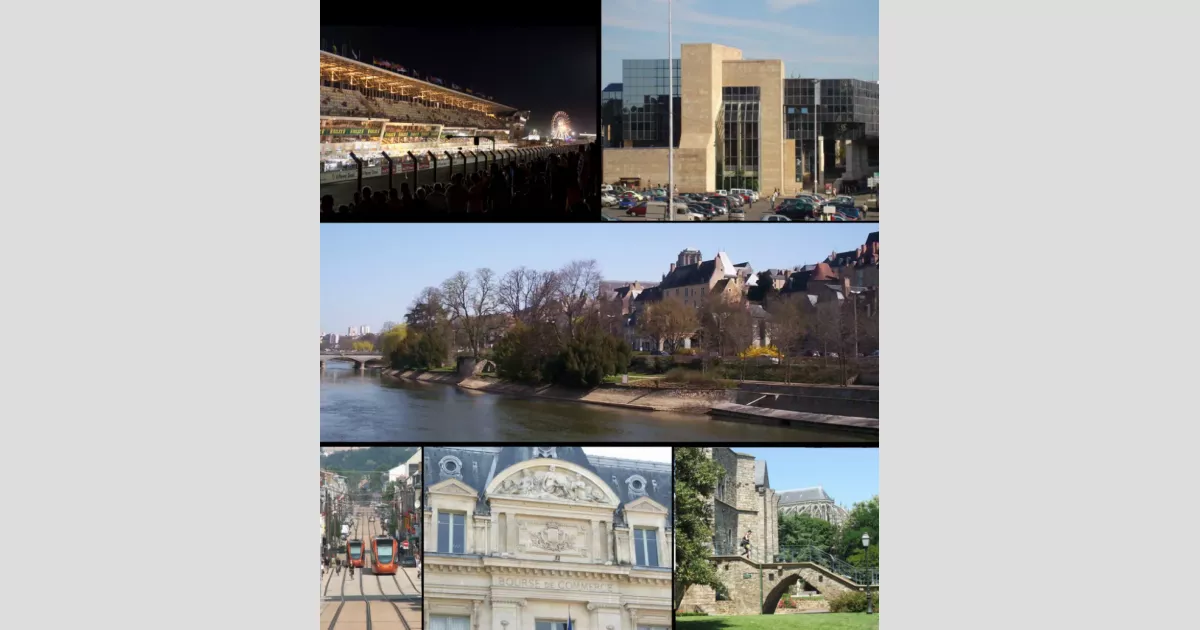Le Mans, a city in northwestern France situated at the confluence of the Sarthe and Huisne rivers, holds historical significance as the traditional capital of Maine. Today, it serves as the capital of the Sarthe department and the seat of the Roman Catholic diocese of Le Mans. Geographically, Le Mans is integrated into the Pays de la Loire region.
1906: First French Grand Prix
The inaugural French Grand Prix was hosted on a 64-mile circuit in Le Mans in 1906.
August 1908: Wright Brothers' Public Demonstration
Wilbur Wright, alongside his brother Orville, conducted their first official public airplane demonstration in August 1908 at the Hunaudières horse racing track near Le Mans.
1923: 24 Hours of Le Mans Gains Popularity
Since the 1920s, the city has gained recognition for its association with motorsports, particularly the 24 Hours of Le Mans sports car endurance race held annually since 1923.
1923: First 24 Hours of Le Mans
The first 24 Hours of Le Mans, the world's oldest active endurance sports car race, took place in 1923.
August 1944: Liberation of Le Mans and Airfield Construction
Following the liberation of Le Mans by U.S. forces in August 1944, the Ninth Air Force IX Engineering Command commenced the construction of a combat Advanced Landing Ground, designated as "A-35," which became operational on September 3rd of the same year.
1955: Le Mans Disaster
Tragedy struck the 1955 Le Mans race when a major accident resulted in the loss of eighty-four spectators.
1999: FIBA EuroBasket at Antarès
In 1999, the Antarès arena in Le Mans served as one of the host venues for the FIBA EuroBasket tournament.
2006: Le Mans Sarthe Basket Victory
Le Mans Sarthe Basket, the city's basketball team, achieved a significant milestone in 2006 by winning the LNB Pro A, France's highest level professional basketball league.
November 2007: Le Mans Inaugurates Light Rail System
In November 2007, Le Mans modernized its public transportation system with the inauguration of a new light rail system.
2018: Population of Le Mans Reaches 367,082
By 2018, the metropolitan area of Le Mans had grown to house a population of 367,082, with 143,252 residing within the city limits.
Mentioned in this timeline

Basketball is a team sport played on a rectangular court...
France officially the French Republic is primarily located in Western...

A car also known as an automobile is a wheeled...

The horse scientifically known as Equus ferus caballus is a...

September is the ninth month of the year in the...
Trending
6 months ago St Vincent's Hospital in NSW Prioritizes Upgrades Over Sale, Investing in Future

1 month ago Vivienne Westwood's Punk Jewellery Celebrated in New Book Showcasing Fashion Icon's Legacy

2 months ago Cindy Crawford shines at the 2025 LACMA Art + Film Gala.

1 month ago Timothée Chalamet discusses having children, Kylie Jenner reportedly hurt by his interview comments.

6 months ago Carrie Coon juggled 'White Lotus' and 'Gilded Age' with only 48 hours break.
Portland Oregon is the state's most populous city situated in the Pacific Northwest at the junction of the Willamette and...
Popular

Candace Owens is an American conservative political commentator and author...

Ilhan Omar is an American politician currently serving as the...

XXXTentacion born Jahseh Dwayne Ricardo Onfroy was a controversial yet...

Tucker Carlson is an American conservative political commentator known for...

Kashyap Pramod Patel is an American lawyer who became the...

Bill Gates an American businessman and philanthropist revolutionized personal computing...
